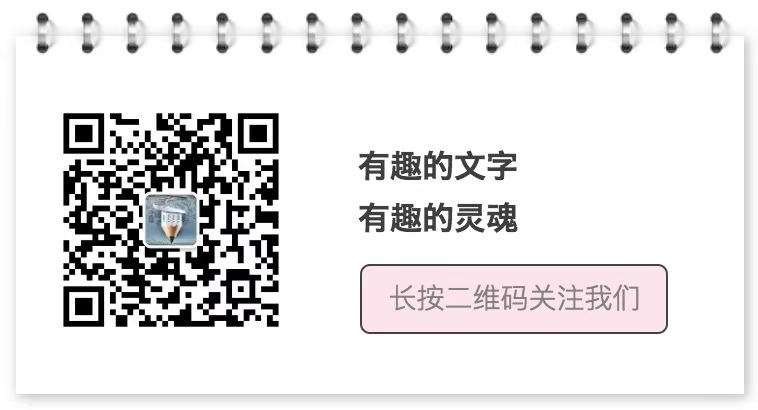in front WebRTC server construction We have built the server environment required by WebRTC, mainly including three servers:
Room server, signaling server and TURN penetration server.
Later, we will learn how to use WebRTC to realize audio and video calls step by step. Today we will learn how to preview camera data using WebRTC.
Here's the bottom. Most of the practices in the later learning process are based on the official packaging Library of WebRTC. Therefore, most of the code is Java or Kotlin, and the relevant code of JNI will not be involved for the time being, so the threshold is still very low.
Good good study,day day up. So easy...
Import dependency Library
First, we introduce the dependency Library of WebRTC into the Android Studio project:
implementation 'org.webrtc:google-webrtc:1.0.+'
Dynamic permissions
First of all, CAMERA permission is definitely required. If audio data is required, record is also required_ Audio permissions.
I believe that children's shoes based on Android development are no stranger to dynamic permissions. There are many related open source libraries on gitHub, so I won't introduce them here.
Preview camera
As a complete solution for point-to-point communication, WebRTC has completely encapsulated the acquisition and preview of camera data. Developers can directly call relevant API s,
Developers do not need to write OpenGL texture rendering and other related logic code.
If children's shoes are interested in how to render camera data using OpenGL, please refer to the author's previous article: Preview CameraX camera data with OpenGL
Using WebRTC to preview camera data mainly includes the following steps:
1. Create EglBase and SurfaceViewRenderer
An important function of EglBase is to provide EGL rendering context and EGL version compatibility.
SurfaceViewRenderer is a rendering View inherited from SurfaceView, which provides the function of OpenGL rendering image data.
// Create EglBase rootEglBase = EglBase.create() camera_preview.init(rootEglBase?.eglBaseContext, null) //hardware speedup camera_preview.setEnableHardwareScaler(true) camera_preview.setScalingType(RendererCommon.ScalingType.SCALE_ASPECT_FILL)
2. Create videocamera
Videocamera is mainly used to provide camera data, such as control resolution and frame rate.
Camera1 and Camera2 compatible via CameraEnumerator interface:
// Create videocamera
private fun createVideoCapture(): VideoCapturer? {
return if (Camera2Enumerator.isSupported(this)) {
createCameraCapture(Camera2Enumerator(this))
} else {
createCameraCapture(Camera1Enumerator(true))
}
}
// Really create the implementation of videocamera
private fun createCameraCapture(enumerator: CameraEnumerator): VideoCapturer? {
val deviceNames = enumerator.deviceNames
// First, try to find front facing camera
for (deviceName in deviceNames) {
if (enumerator.isFrontFacing(deviceName)) {
val videoCapture: VideoCapturer? = enumerator.createCapturer(deviceName, null)
if (videoCapture != null) {
return videoCapture
}
}
}
for (deviceName in deviceNames) {
if (!enumerator.isFrontFacing(deviceName)) {
val videoCapture: VideoCapturer? = enumerator.createCapturer(deviceName, null)
if (videoCapture != null) {
return videoCapture
}
}
}
return null
}
After the videocamera is created, it needs to be initialized with the surfaceexturehelper, otherwise an uninitialized exception will be thrown when calling the preview:
// initialization
mSurfaceTextureHelper =
SurfaceTextureHelper.create("CaptureThread", rootEglBase?.eglBaseContext)
// Create VideoSource
val videoSource = mPeerConnectionFactory!!.createVideoSource(false)
mVideoCapture?.initialize(
mSurfaceTextureHelper,
applicationContext,
videoSource.capturerObserver
)
/**
* Create PeerConnectionFactory
*/
private fun createPeerConnectionFactory(context: Context?): PeerConnectionFactory? {
val encoderFactory: VideoEncoderFactory
val decoderFactory: VideoDecoderFactory
encoderFactory = DefaultVideoEncoderFactory(
rootEglBase?.eglBaseContext,
false /* enableIntelVp8Encoder */,
true
)
decoderFactory = DefaultVideoDecoderFactory(rootEglBase?.eglBaseContext)
PeerConnectionFactory.initialize(
PeerConnectionFactory.InitializationOptions.builder(context)
.setEnableInternalTracer(true)
.createInitializationOptions()
)
val builder = PeerConnectionFactory.builder()
.setVideoEncoderFactory(encoderFactory)
.setVideoDecoderFactory(decoderFactory)
builder.setOptions(null)
return builder.createPeerConnectionFactory()
}
3. Create VideoTrack
VideoTrack is a video track, similar to AudioTrack audio track. Its function is to output the video data obtained by videoapter combined with VideoSource to SurfaceViewRenderer for rendering and display.
val VIDEO_TRACK_ID = "1" //"ARDAMSv0"
// Create VideoTrack
mVideoTrack = mPeerConnectionFactory!!.createVideoTrack(VIDEO_TRACK_ID,
videoSource
)
mVideoTrack?.setEnabled(true)
// Bind render View
mVideoTrack?.addSink(camera_preview)
Turn on rendering with videocamera
You can open the preview in the relevant life cycle of the Activity:
override fun onResume() {
super.onResume()
// Turn on camera preview
mVideoCapture?.startCapture(
VIDEO_RESOLUTION_WIDTH,
VIDEO_RESOLUTION_HEIGHT,
VIDEO_FPS
)
}
Complete code
CapturePreviewActivity.kt:
package com.fly.webrtcandroid
import android.content.Context
import androidx.appcompat.app.AppCompatActivity
import android.os.Bundle
import org.webrtc.*
/**
* Camera preview
*/
class CapturePreviewActivity : AppCompatActivity() {
val VIDEO_TRACK_ID = "1" //"ARDAMSv0"
private val VIDEO_RESOLUTION_WIDTH = 1280
private val VIDEO_RESOLUTION_HEIGHT = 720
private val VIDEO_FPS = 30
// Draw global context
private var rootEglBase: EglBase? = null
private var mVideoTrack: VideoTrack? = null
private var mPeerConnectionFactory: PeerConnectionFactory? = null
//Texture rendering
private var mSurfaceTextureHelper: SurfaceTextureHelper? = null
private var mVideoCapture: VideoCapturer? = null
private val camera_preview by lazy {
findViewById<SurfaceViewRenderer>(R.id.camera_preview)
}
override fun onCreate(savedInstanceState: Bundle?) {
super.onCreate(savedInstanceState)
setContentView(R.layout.activity_capture_preview)
rootEglBase = EglBase.create()
camera_preview.init(rootEglBase?.eglBaseContext, null)
//Suspended Top
camera_preview.setZOrderMediaOverlay(true)
//hardware speedup
camera_preview.setEnableHardwareScaler(true)
camera_preview.setScalingType(RendererCommon.ScalingType.SCALE_ASPECT_FILL)
mPeerConnectionFactory = createPeerConnectionFactory(this)
mVideoCapture = createVideoCapture()
// initialization
mSurfaceTextureHelper =
SurfaceTextureHelper.create("CaptureThread", rootEglBase?.eglBaseContext)
// Create VideoSource
val videoSource = mPeerConnectionFactory!!.createVideoSource(false)
mVideoCapture?.initialize(
mSurfaceTextureHelper,
applicationContext,
videoSource.capturerObserver
)
mVideoTrack = mPeerConnectionFactory!!.createVideoTrack(VIDEO_TRACK_ID,
videoSource
)
mVideoTrack?.setEnabled(true)
mVideoTrack?.addSink(camera_preview)
}
/**
* Create PeerConnectionFactory
*/
private fun createPeerConnectionFactory(context: Context?): PeerConnectionFactory? {
val encoderFactory: VideoEncoderFactory
val decoderFactory: VideoDecoderFactory
encoderFactory = DefaultVideoEncoderFactory(
rootEglBase?.eglBaseContext,
false /* enableIntelVp8Encoder */,
true
)
decoderFactory = DefaultVideoDecoderFactory(rootEglBase?.eglBaseContext)
PeerConnectionFactory.initialize(
PeerConnectionFactory.InitializationOptions.builder(context)
.setEnableInternalTracer(true)
.createInitializationOptions()
)
val builder = PeerConnectionFactory.builder()
.setVideoEncoderFactory(encoderFactory)
.setVideoDecoderFactory(decoderFactory)
builder.setOptions(null)
return builder.createPeerConnectionFactory()
}
private fun createVideoCapture(): VideoCapturer? {
return if (Camera2Enumerator.isSupported(this)) {
createCameraCapture(Camera2Enumerator(this))
} else {
createCameraCapture(Camera1Enumerator(true))
}
}
private fun createCameraCapture(enumerator: CameraEnumerator): VideoCapturer? {
val deviceNames = enumerator.deviceNames
// First, try to find front facing camera
for (deviceName in deviceNames) {
if (enumerator.isFrontFacing(deviceName)) {
val videoCapture: VideoCapturer? = enumerator.createCapturer(deviceName, null)
if (videoCapture != null) {
return videoCapture
}
}
}
for (deviceName in deviceNames) {
if (!enumerator.isFrontFacing(deviceName)) {
val videoCapture: VideoCapturer? = enumerator.createCapturer(deviceName, null)
if (videoCapture != null) {
return videoCapture
}
}
}
return null
}
override fun onResume() {
super.onResume()
// Turn on camera preview
mVideoCapture?.startCapture(
VIDEO_RESOLUTION_WIDTH,
VIDEO_RESOLUTION_HEIGHT,
VIDEO_FPS
)
}
}
Layout file activity_capture_preview.xml:
<?xml version="1.0" encoding="utf-8"?>
<org.webrtc.SurfaceViewRenderer xmlns:android="http://schemas.android.com/apk/res/android"
xmlns:app="http://schemas.android.com/apk/res-auto"
xmlns:tools="http://schemas.android.com/tools"
android:id="@+id/camera_preview"
android:layout_width="match_parent"
android:layout_height="match_parent"
tools:context=".CapturePreviewActivity">
</org.webrtc.SurfaceViewRenderer>
Pay attention to me and make progress together. Life is more than coding!!!
